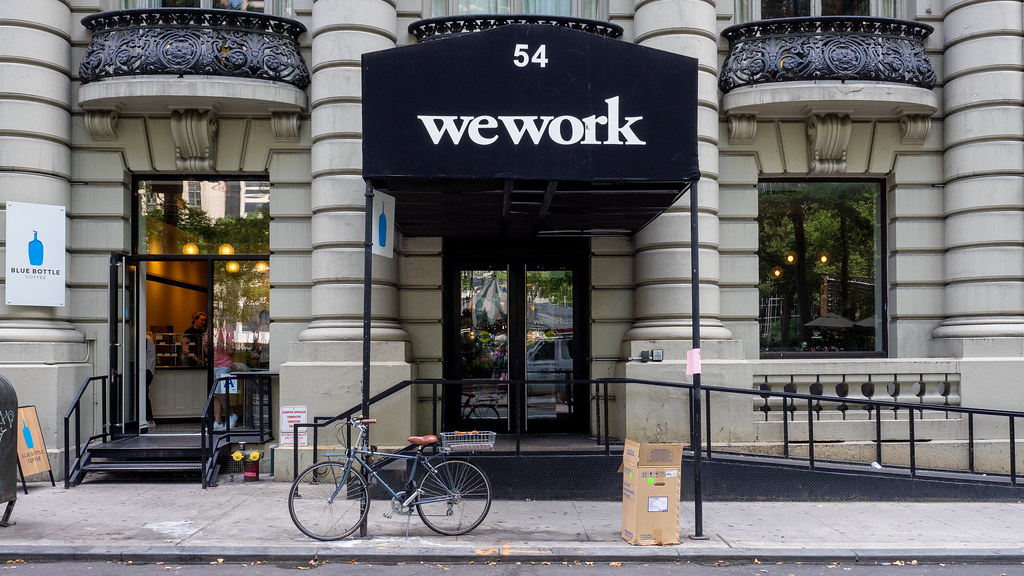Over the recent years, despite facing its fair share of challenges and successes in the public’s view, WeWork has solidified its position as a frontrunner in the co-working sector.
Rapidly becoming an inspirational force behind the industry’s growth, WeWork’s success, flourishing worldwide despite the pandemic, truly demonstrates the new normal of co-working.
Slightly more than ten years back, the company was preparing to leave its mark, particularly under the leadership of its newly appointed CEO, Sandeep Mathrani.
Even today, WeWork continues to shake up the industry at every turn. In recent years, it has expanded its reach in the business sector by acquiring technology startups like office sign-in system Welkio and physical data software company Euclid.
The brand’s app, WeWork On Demand, expanded at the end of 2020 and is now available in 17 major U.S. cities. Despite tumultuous setbacks under founder Adam Neumann’s leadership, WeWork is on track to profitability once again by the end of 2021.
If there’s something WeWork’s controversial journey can teach us, it’s the importance of adaptability in growing a business, as recently revealed when WeWork considered entering the Starbucks space and catering to remote workers with their laptops.

WeWork’s unprecedented success raises numerous questions:
Who are the investors behind WeWork? How does WeWork make money? What financial uncertainties come with its unique business approach?
Why do landlords choose to lease to WeWork instead of traditional tenants? The answers might surprise you.
What is WeWork?
Established in 2010 within the vibrant landscape of New York, WeWork embarked on a mission to offer co-working spaces to a diverse clientele, including entrepreneurs, startups, freelancers, and even established corporations.
From its early days, the company has witnessed remarkable growth, evolving into one of the most expansive and renowned co-working networks globally.
With thousands of dedicated employees, WeWork currently operates a vast network of over 800 locations spanning across 32 countries, from Brazil and Germany to Thailand, alongside a presence in 40 major cities within the United States.
What Membership Options Are Available?
Flexibility is key in WeWork’s business model. They make sure that clients can put their concerns about lengthy lease agreements at ease. The company offers six membership levels: All Access, On Demand, Dedicated Desk, Small Private Office, Office Suite, and Custom Full-Floor Office.

For solo workers, the “All-Access” subscription option opens the doors to workspaces worldwide, allowing members to drop in whenever they want, choose any available seat in the common area, and start working immediately.
On the other hand, the “On-Demand” choice permits you to settle charges solely for the periods when you utilize amenities such as workstations or meeting spaces, either on a daily or hourly basis.
For those seeking a bit more stability, WeWork provides dedicated desks that are exclusively reserved for an individual or a business.
All kinds of teams and businesses can also opt for private offices, equipped with furniture and the capacity to accommodate dozens of employees as they grow.
The most personalized option is a custom build-out, offering maximum flexibility for groups looking to tailor their workspace with features like CEO suites, conference rooms, or labs. WeWork scouts and transforms buildings for both large and small businesses; they’ve done it for giants like Facebook, Microsoft, HSBC, and Deloitte.
Who Are WeWork’s Investors?
WeWork has attracted investments from several global entities, including SoftBank Group, private equity firm Hony Capital, and real estate developer Greenland Holdings.
Back in August 2017, SoftBank, along with its visionary founder Masayoshi Son, injected a significant $4.4 billion investment into WeWork.
This financial infusion encompassed $3 billion directed towards WeWork’s foundational investments and the acquisition of existing shares, with an additional $1.4 billion designated for WeWork’s expansion into the Asian market,

including WeWork China, WeWork Japan, and WeWork Pacific. In August 2018, WeWork announced another $1 billion funding from SoftBank.
By 2019, WeWork had raised nearly $47 billion in private equity and venture capital funding since its founding years. Asian companies like Hony Capital, Legend Holdings, and China Oceanwide have shown significant interest in WeWork’s anticipated expansion into the eastern markets.
Besides its Asian backers, Western entities such as Goldman Sachs, J.P. Morgan, and T. Rowe Price have also shown their support by investing in WeWork, headquartered in Manhattan.
How Does WeWork Make Money?
In a nutshell, WeWork takes buildings on lease from property owners and then rents them out to customers at higher rates.
The prices for all the locations used by WeWork are not the same; for example, acquiring real estate in Baltimore or Nashville is cheaper compared to New York City. These price disparities help WeWork save significantly on overhead costs.
After leasing the buildings, WeWork transforms them, updating everything and adding amenities like cafes, offices, and communal spaces.
After the renovations are finished, the company leases out the area at a substantial premium.

Besides earning money through rent, WeWork also provides additional services for a fee, such as partnering with local businesses, offering car rentals, and other premium card services.


